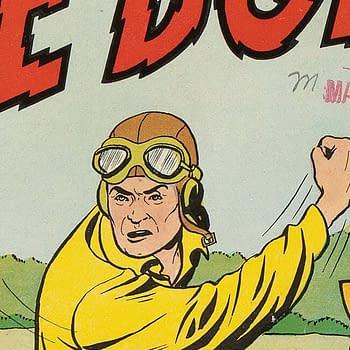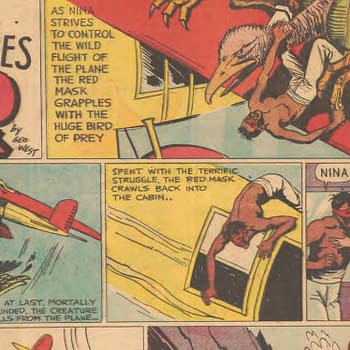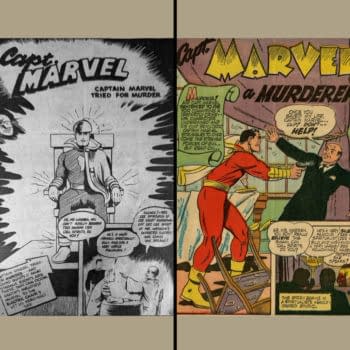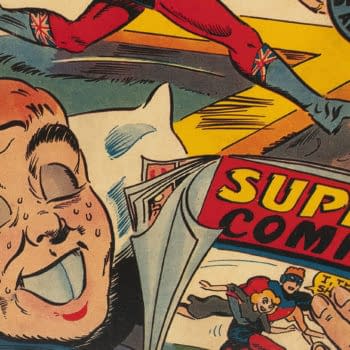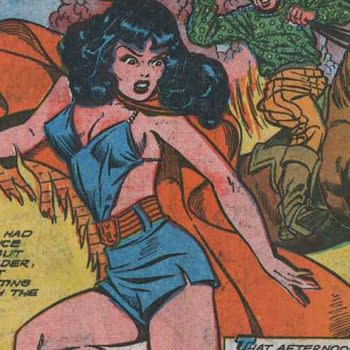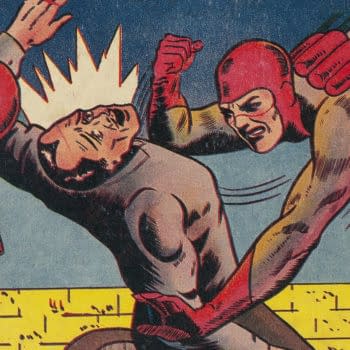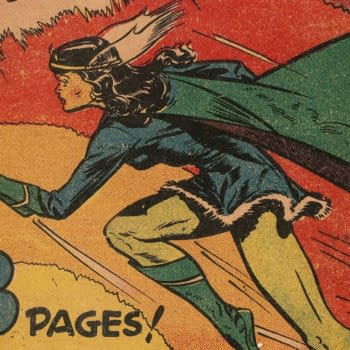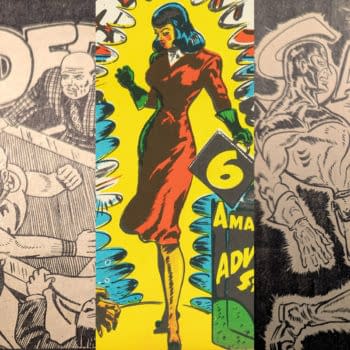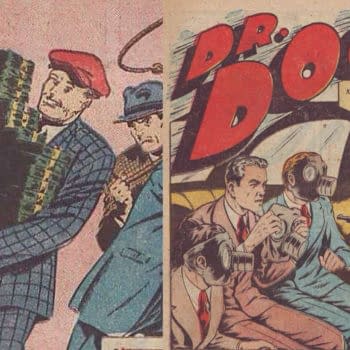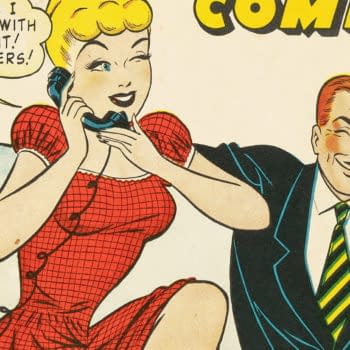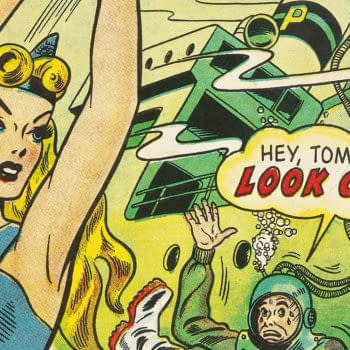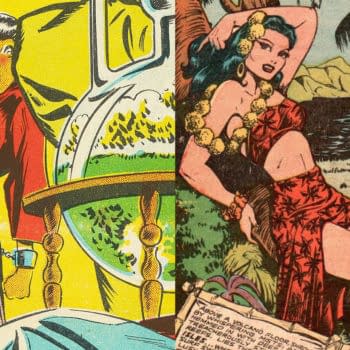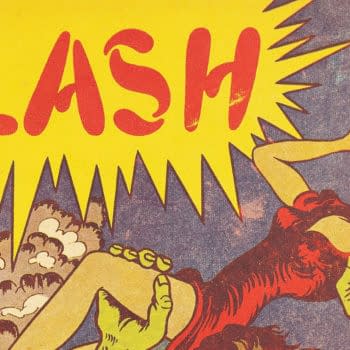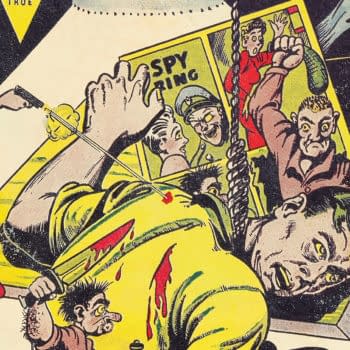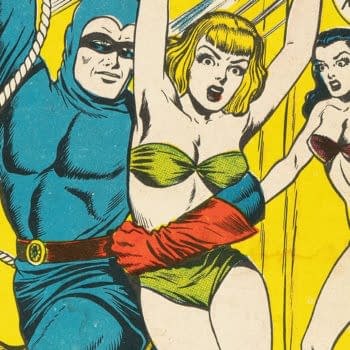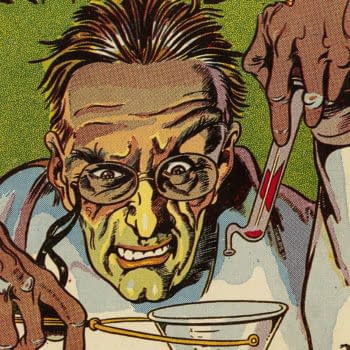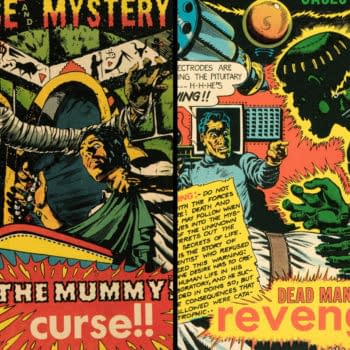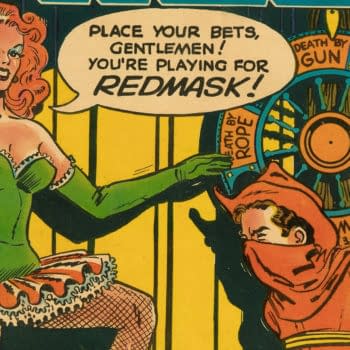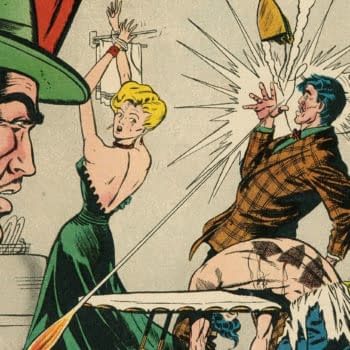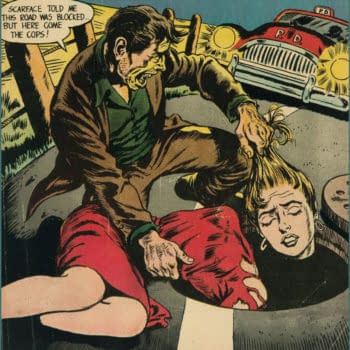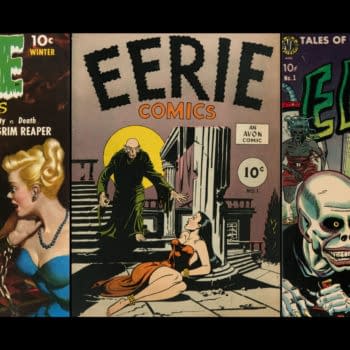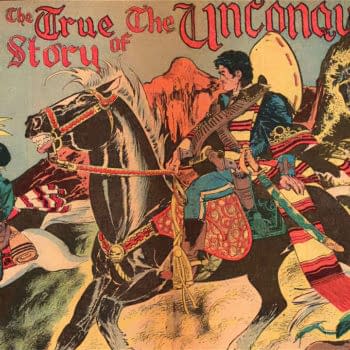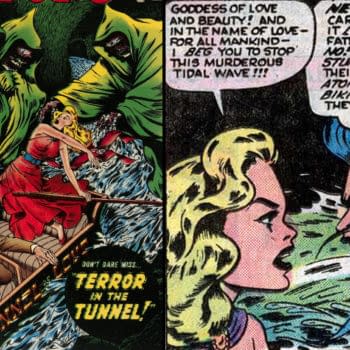Blue Bolt returns to the cover while a character inspired by Margaret Bourke-White joins his story, and RAF pilot Guy Gibson is featured elsewhere in the issue.
Heritage Sponsored Archives
The earliest and one of the most rare of all Standard/Better/Nedor series, Best Comics featured the Adventures of the Red Mask.
Publisher Anglo-American Publishing had Fawcett Captain Marvel stories redrawn in Canada during the Golden Age.
Canadian publisher F.E. Howard did some unusual Archie Comics reprints in Canada during WWII, which remain highly sought-after today.
Pioneer Publishing of London, Ontario, is a mysterious publisher who put out this unusual Phantom Lady #17 reprint in 1948.
Was a notorious paper broker behind the publication of both the U.S. and Canadian version of Atomic Comics?
The very rare 1945 Nelvana of the Northern Lights one-shot has become the most iconic and famous Canadian comic book of the Golden Age.
Triumph Comics #21 features a rare Nelvana cover (in her Alana North secret agent identity), plus Captain Wonder, Speed Savage and much more.
Obscure 1949 Bell Features comic book Unusual Adventures #52 features an adaptation of Brewster's Millions and a master criminologist named Dr. Doom.
Marvel's Millie the Model appeared in a wide range of Bell Features comic books, including Active Comics #103.
Two of the foundational comic book creators of Canada's Golden Age, Ted McCall and Ed Furness, teamed up for Freelance Comics.
Marvel's Namora shows up unexpectedly on the cover of Bell Features' Comics Toons #37, in a cover by Ken Bald from Namora #2.
Bell's Active Comics #29 is an unusual combination of a mysterious Adrian Dingle cover with Matt Baker's South Sea Girl inside.
The unusual 1948 Canadian comic book Flash is a historical oddity, but its circumstances connect it to one of the best-known tabloids of the era.
Rucker Publications' Rocket Man Comics features Gus Ricca's comic artist nightmare cover from the highly sought-after Punch Comics #9.
With Jack Kamen art not seen on a U.S. cover, Bell Features' 4Most #22 features Blue Beetle and Goldie the chorus girl.
Gus Ricca's iconic Dr. Doom piece from the cover of Dynamic Comics #11 was also used for Canadian comic The Weekender v2 #1 from Rucker.
Marvel's original Werewolf by Night story appeared in Marvel Tales #116, cover-dated July 1953 in a Pre-Code Horror classic.
L.B. Cole produced a number of stand-out Pre-Code Horror covers during his Star Publications era.
This Magazine is Haunted #16 (Charlton, 1954) features the second-ever Steve Ditko cover, and the highest-graded copy is up for auction. #Ditko #sponsored
Superior Comics' 1951-1955 Pre-Code Horror title Strange Mysteries featured stand-out art from Iger Studio, including Matt Baker.
The "Death Wheel" in 1952's Tim Holt #30 cover by Frank Bolle has long been a matter of interest to people who research the Zodiac killer.
Hillman hired Crime Does Not Pay creators Charles Biro and Bob Wood to launch Clue Comics for them, but it seems not to have worked as planned.
Testifying before a Senate Subcommittee seems to have made publisher William K. Friedman angry, because his subsequent comics like Fight Against Crime pushed boundaries even more.
Avon's 1947 Eerie Comics #1 is considered the first Pre-Code Horror comic book, and the publisher eventually battled Ziff-Davis over their own Eerie Adventures.
The Challenger was a four issue series from 1945-1946 designed to fight prejudice and discrimination featuring work by Joe Kubert and others.
One of the most sought-after Pre-Code Horror comics, Bill Everett's cover for Venus #19 is a fitting reflection of the "Kiss of Death."
Venus #18 (Marvel, 1952) is sought after for Bill Everett's phenomenally creepy cover, but Everett also revisits the ocean depths here in a way that foreshadows Submariner's return in Fantastic Four #4.
Ace's Challenge of the Unknown #6 was supposed to level-up their PCH line, running afoul of the NY State Legislature in the process.
In an important moment for Pre-Code Horror, American Comics Group and Ace Magazines waged a war involving the usage of "Unknown."


